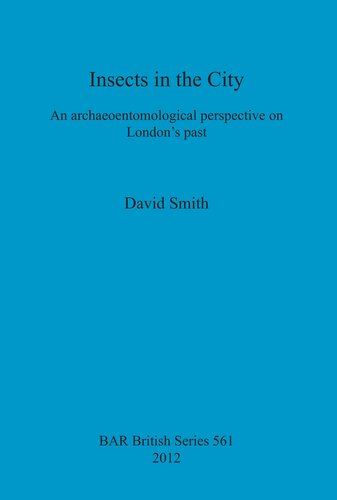

Most ebook files are in PDF format, so you can easily read them using various software such as Foxit Reader or directly on the Google Chrome browser.
Some ebook files are released by publishers in other formats such as .awz, .mobi, .epub, .fb2, etc. You may need to install specific software to read these formats on mobile/PC, such as Calibre.
Please read the tutorial at this link: https://ebookbell.com/faq
We offer FREE conversion to the popular formats you request; however, this may take some time. Therefore, right after payment, please email us, and we will try to provide the service as quickly as possible.
For some exceptional file formats or broken links (if any), please refrain from opening any disputes. Instead, email us first, and we will try to assist within a maximum of 6 hours.
EbookBell Team

4.3
88 reviewsInsect remains from archaeological sites can tell us an astonishing amount about the past. This ranges from lists of which species were present, via intimate details of the parasitological state of Londoners of the time, to socially and economically significant reconstructions of the environment and climate. However, many insects are unfamiliar to most people, and the methods used to glean information from their fossils can be complex. In this study the author makes us feel much more familiar with the creatures themselves, and presents descriptions of site results, explanations of methodology, and outlines his conclusions. In addition we understand how the details of remains for single sites can be woven together into bigger stories. The results from London, with their long time span and geographical range, present an excellent basis for an accessible account of this kind. This book will bring them to a wider audience, which is commendable. But even more importantly it will serve to convince more archaeologists that bioarchaeology in general, and work on insect remains in particular, is worthwhile and more than justifies its cut of any excavation project budget.